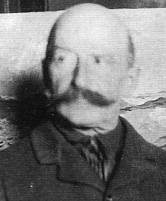
|
Born February 24, 1836, in Boston, Homer was almost entirely self-taught as a painter. In 1857 he sought work as a magazine illustrator, becoming a regular contributor to the popular Harper's Weekly. His illustrations, primarily engravings, were characterized by clean outlines, simplified forms, dramatic contrasts of light and dark, and lively groupings of figures. These qualities were to remain important characteristics of his art throughout his career.
During the American Civil War (1861-1865), Homer made several trips to the Virginia front, where he painted his first important oil, Prisoners from the Front (1866, Metropolitan Museum, New York City), a work notable for its cool objectivity and vigorous realism. In 1856 he spent a year in France, but although his interest in the painterly possibilities of natural light ran parallel to that of the early impressionists, he was not directly influenced by impressionism or French art. In 1873 he began working in watercolor, a medium that became as important to him as oil. His subject matter of the 1870s was primarily rural or idyllic—scenes of farm life; children at play; and resort scenes peopled with fashionable women; one of the best known of the latter is Long Branch, New Jersey (1869, Museum of Fine Arts, Boston).
A stay in England from 1881 to 1882, during which Homer lived in a fishing village, led to a permanent change in his subject matter. Thereafter he concentrated on large-scale scenes of nature, particularly scenes of the sea, of its fishermen, and of their families. Taking up solitary residence on the Maine coast at Prout's Neck, he produced such masterpieces of realism as Eight Bells (1886, Addison Gallery, Andover, Massachusetts); in it the drama of the sea scene is imbued with an epic, heroic quality that symbolizes the dominant theme of his maturity: human struggle with the forces of nature.
After 1884, Homer spent many of his winters in Florida, in the Bahamas, and in Cuba. His many scenes of the Tropics were painted mostly in watercolor, and his technique was the most advanced of its day—loose, fresh, spontaneous, almost impressionistic, although it never lost its basic grounding in naturalism. In 1899 he painted one of his most powerful works, the frightening Gulf Stream (Metropolitan Museum), which depicts a solitary black sailor in a small, disabled boat, beset by sharks and alone on a billowing sea.
In the grandeur of his themes and the strength of his designs, he became a dominant influence on the American realist style of painting. Homer died in Prout's Neck on September 29, 1910.
|

